This year marks the completion of a three-year backcountry construction boom at the Green Mountain Club. Paid crews and volunteers finished five new shelters, more than in any year since 1963. The average shelter has lasted about 30 years before wear, tear and damage made it inhabitable. But with better designs and standards we are dramatically increasing the expected longevity of new shelters, which should serve hikers better and reduce repair needs in the long run.
Shelter Construction in 2023
Sunrise Shelter
The new shelter is located 1.2 miles south of its previous site, and farther from the road. Site preparation, the foundation, piers, floor system and privy were completed in 2022. The GMC Special Projects Crew and volunteer Chip Swanson built the shelter in five working weeks in 2023.
Seth Warner Shelter
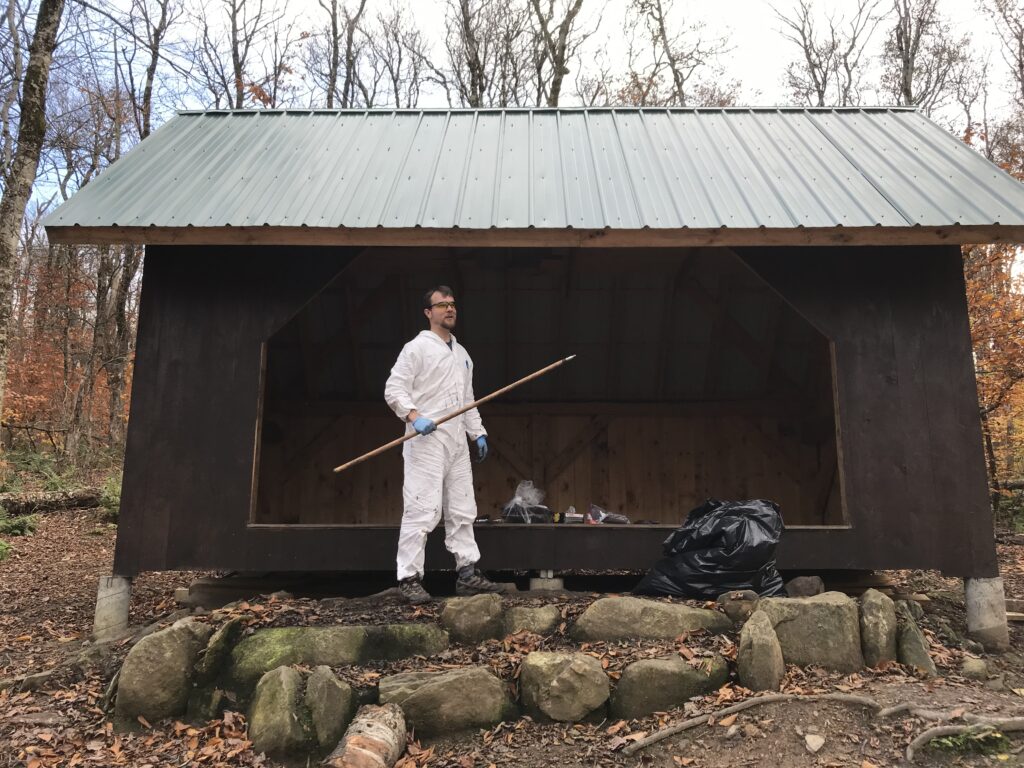
The new shelter is located two miles north from the previous site, and farther from the road to reduce nuisance use. Much work was done in 2021 and 2022, thanks to volunteer Jonathan Bigelow, who precut the frame before a helicopter airdrop of materials in 2022. Jonathan and other volunteers assembled the shelter kit in 2022, and the Long Trail Patrol completed final site work and cut the new spur trail early in 2023.
Stratton View Shelter
Begun in 2021 and completed in 2023, the shelter was designed to increase overnight capacity at Stratton Pond, the busiest overnight site in Vermont. Dave Hardy, former director of field programs, began planning the shelter more than ten years ago as part of the Stratton Pond Management Plan and associated trail relocations. A shelter at the same spot was removed in the 1990s.
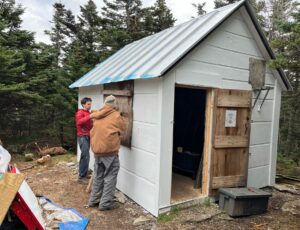 Stratton Mountain Caretaker Cabin
Stratton Mountain Caretaker Cabin
The historic cabin received a new roof, floor, woodstove, repairs to its framing, and replacement of 30 percent of its siding. The cabin, originally built in 1928 for state fire lookouts, houses GMC caretakers. Hugh and Jeanne Joudry spent the better part of 50 years there, first as lookouts and then as caretakers; now many will follow them.
Jean Haigh Cabin
Jean Haigh Cabin on Wheeler Pond was finished, replacing Beaver Dam Cabin, removed in 2018. It is insulated, sleeps eight, has a screened porch and a woodstove, and will be fully ADA accessible. GMC’s volunteer camps committee completed design and planning with architectural help from Chad Forcier. Justin Towers, Ry Samosiuk, and various iterations of construction crews and special projects crews carried out construction.
Other Repairs
Not only were the five new shelters completed in 2023, crews and volunteers in 2021 and 2022 also complete major repairs on Emily Proctor, Puffer, Cooley Glen, Melville Nauheim, and Kid Gore Shelters. Read more about these projects in past “Field Notes” in archived editions of the Long Trail News.
Why, and how, did we take on so many large projects and complete them in a single season, despite disruptive flooding? A few factors are at play:
Construction Yesterday Versus Today
The evolution of Long Trail and Appalachian Trail shelters mirrored the evolution of the trails. Initially trail builders converted old camps, or built new but in rustic styles. Donors financed some paid crews, but most construction was volunteer driven. Designs, locations, and prioritization of shelters depended heavily on volunteers’ preferences and skills.
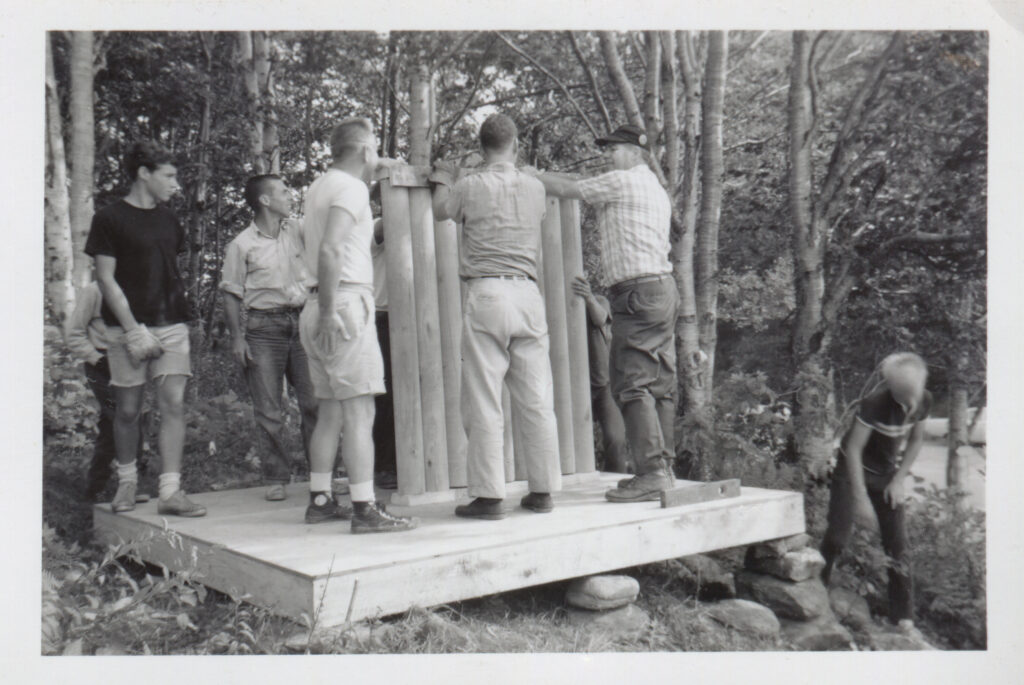
Many Long Trail shelters went up in the 1960s, thanks to U.S. Forest Service funding in response to a backpacking boom. They were adequate for their time, but many were poorly built by today’s standards. Some had no lateral bracing, so they are prone to tipping or leaning. Some were built on piers sitting on the ground, so freezing and thawing causes repeated damage.
Shelters often burned down in the era of wood fires and woodstoves, so longevity of replacements wasn’t a priority. Woodstoves and dumps were removed in the 1970s, part of an overall shift in backcountry management. GMC also hired its first permanent employee then, and doubled down on efforts to educate and serve the growing hiking public.
Initially planning, construction and maintenance of shelters were dispersed among sections, but now they are coordinated at headquarters. We have a strategy for maintaining, repairing or replacing all 63 shelters in prioritized order, with volunteers serving as enormous help in both the design and construction.
Permits, Designs, and Funding, Oh My
Backcountry construction is much more expensive and complicated in the 21st century than it was in the 20th. For starters, the costs of lumber and labor have increased rapidly, especially since 2020.
Today shelters must meet modern building specifications and be universally accessible, and plans must consider natural resource impacts and the experiences of users. Compliance with the National Environmental Policy Act and design reviews by professional engineers are required in the Green Mountain National Forest. Compliance is expensive, but it results in safer and more durable structures.
When building or repairing shelters in the last five years we have: had engineers approve designs; installed lateral bracing; set piers (digging by hand!) at least four feet below ground; and installed large roof overhangs to divert water well away from walls. We renovate and repair existing structures when practical. Replacement of a shelter depends on its condition, environmental problems at its site, its historic importance, and future maintenance needs, among other criteria.
We make “fee-for-service” agreements with the U.S. Forest Service and the Vermont Department of Forests, Parks and Recreation to be paid for labor and materials, since they own shelters on their land after we build them. We also seek grants; we raise funds through efforts like the Long Trail Legacy Fund capital campaign; and we welcome contributions from club members and other donors. Thanks largely to members like you, we have a strong financial foundation for important construction.
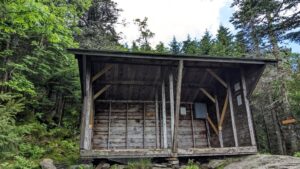
Volunteers Play a Major Role
Today, GMC staff organize volunteers to work effectively alongside professional construction staff. Typically our staff handles paperwork and planning, and provides project management and crew leaders. Volunteers may supply special skills like timber framing, but more often they are the enthusiastic backbone, hauling lumber, raising assembled frames, and more.
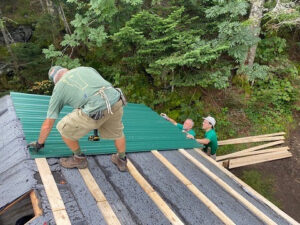
For example, in the last few years Jonathan Bigelow of the Manchester Section designed Tucker Johnson Shelter and Seth Warner Shelter, and expert craftsman Chip Swanson helped our crew with joinery at the timber framed Sunrise Shelter. The Burlington Section installed a new roof on Puffer Shelter in 2022 while a GMC construction crew reset the piers to eliminate leaning.
The Future of Long Trail Shelters
For more than a century GMC has been committed to a free and open trail system with plenty of places to sleep within a day’s walk of each other. With more durable construction and design elements that keep longevity in mind, today’s shelters should last more than 100 years with proper use and upkeep.
We plan to continue the ambitious schedule of renovating at least three shelters annually on a 25-year repair cycle, focusing on commonly worn elements like siding and roofing. Spruce Peak Shelter, Battell Shelter, Bamforth Ridge Shelter, and Taft Lodge are planned for renovation in the next five years.
Finally, new shelters and campsites are sited to maximize hiker convenience and minimize adverse environmental impacts.
Thanks to your continuing support, our crews can preserve and improve our shelter inventory, a key part of fulfilling our mission to protect the Long Trail for future generations of hikers.


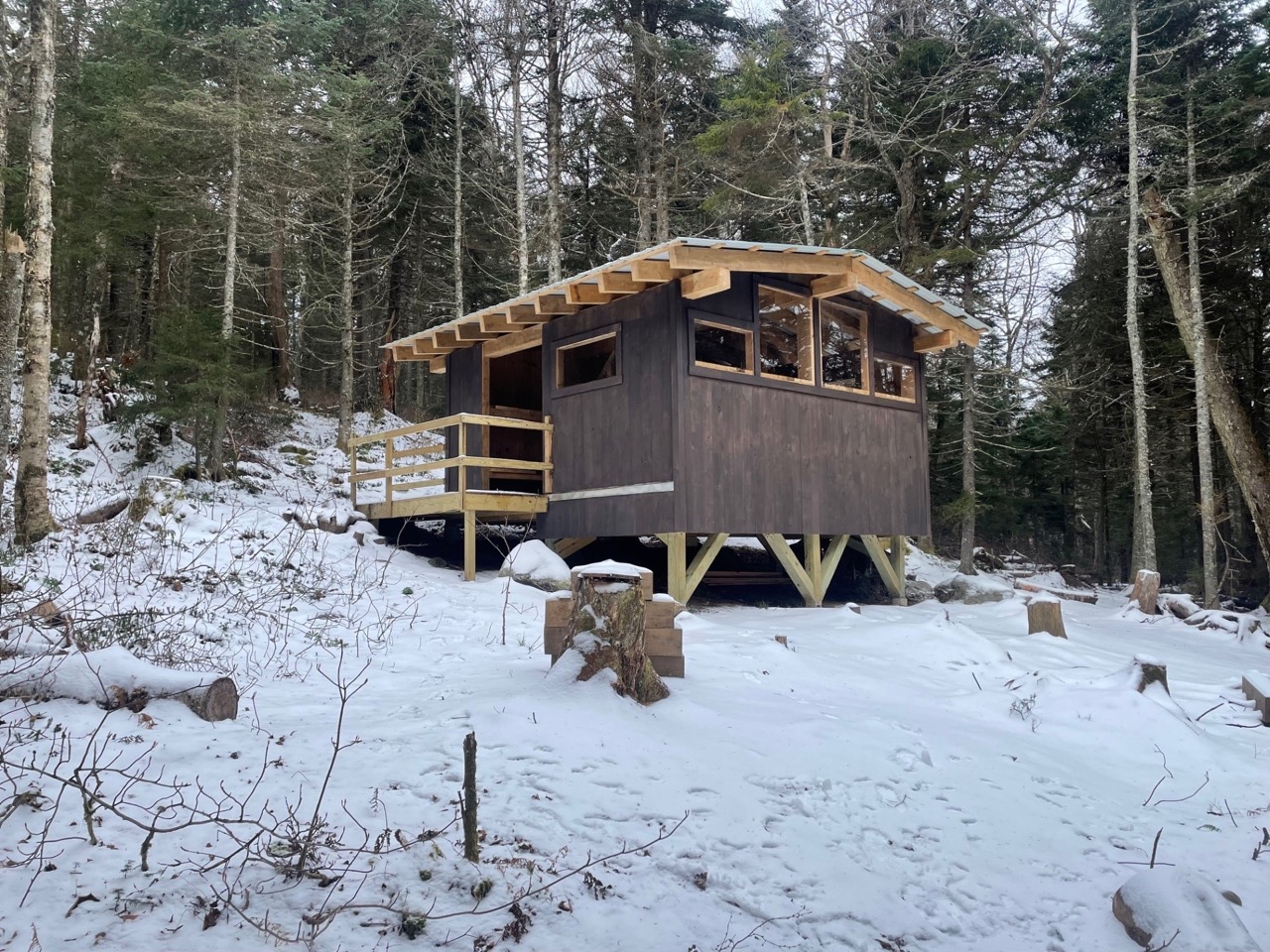
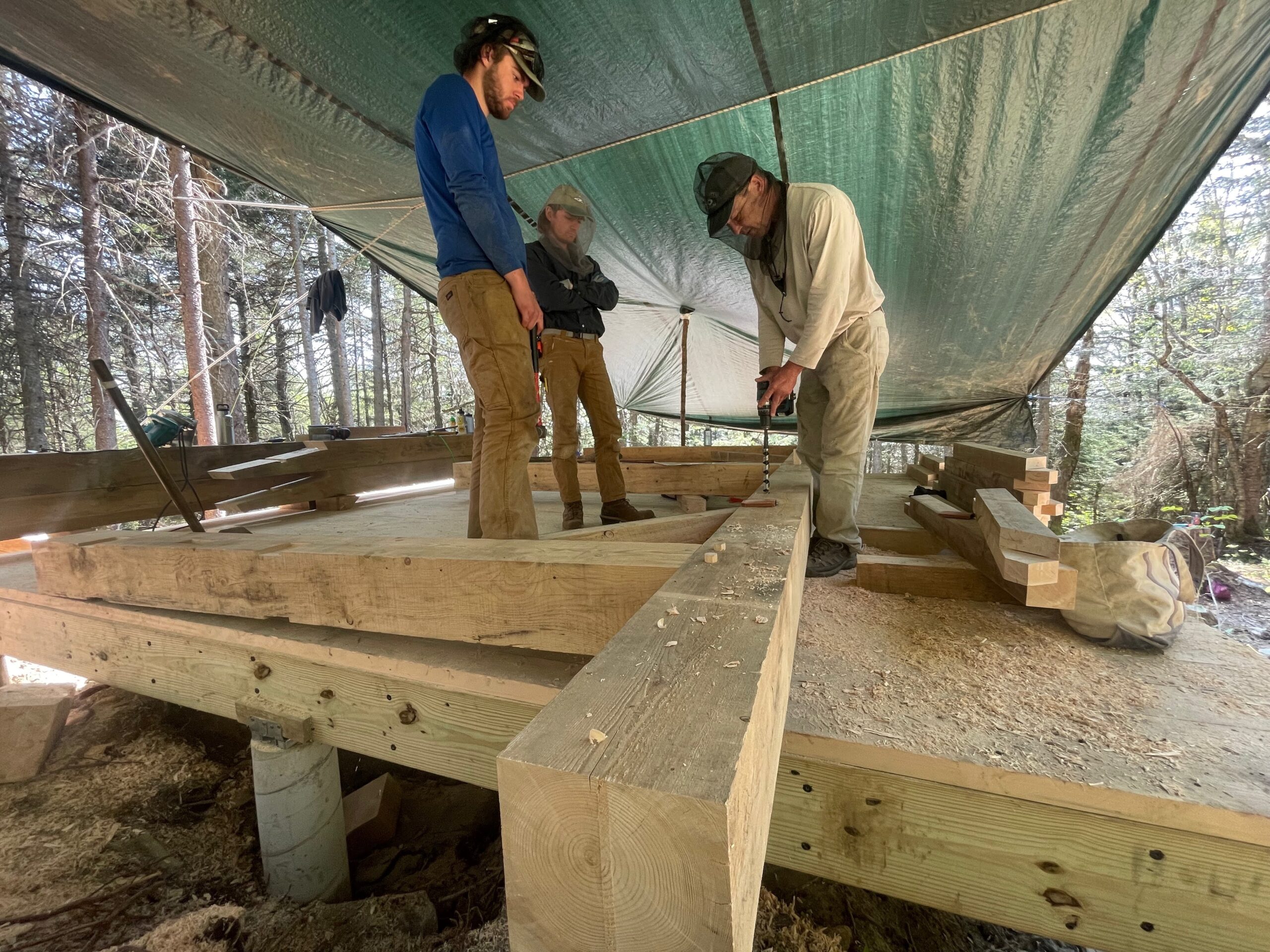
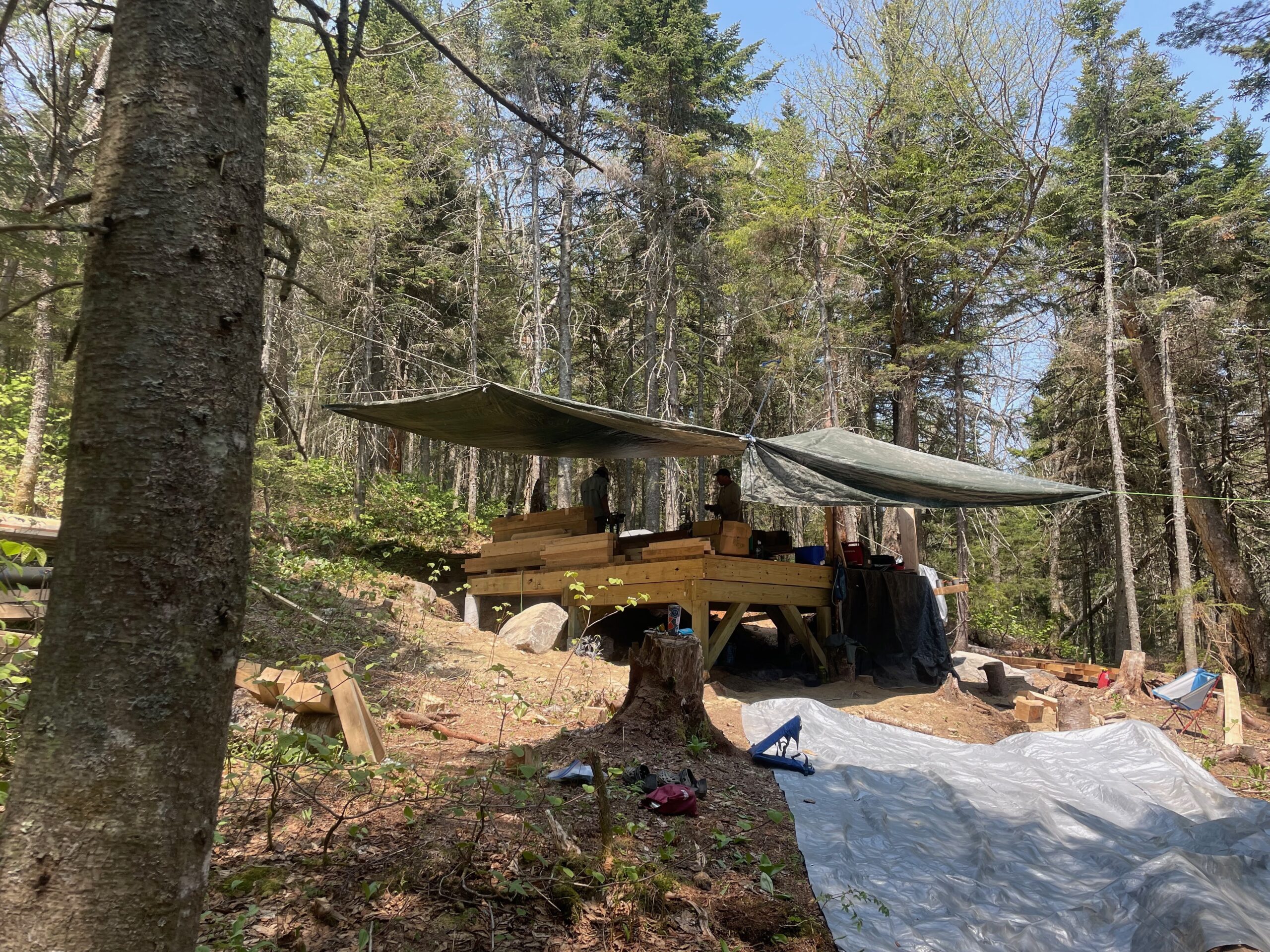
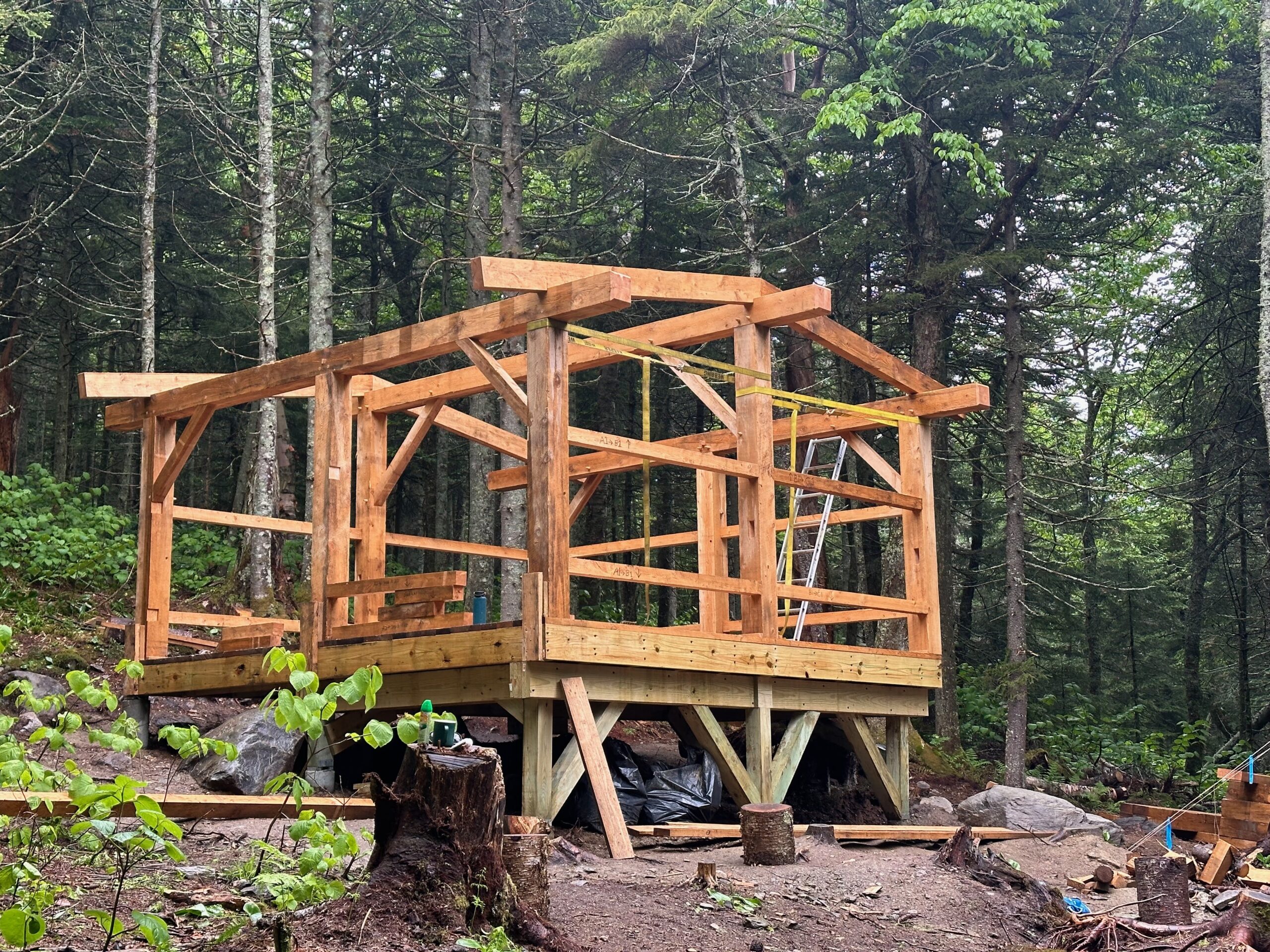
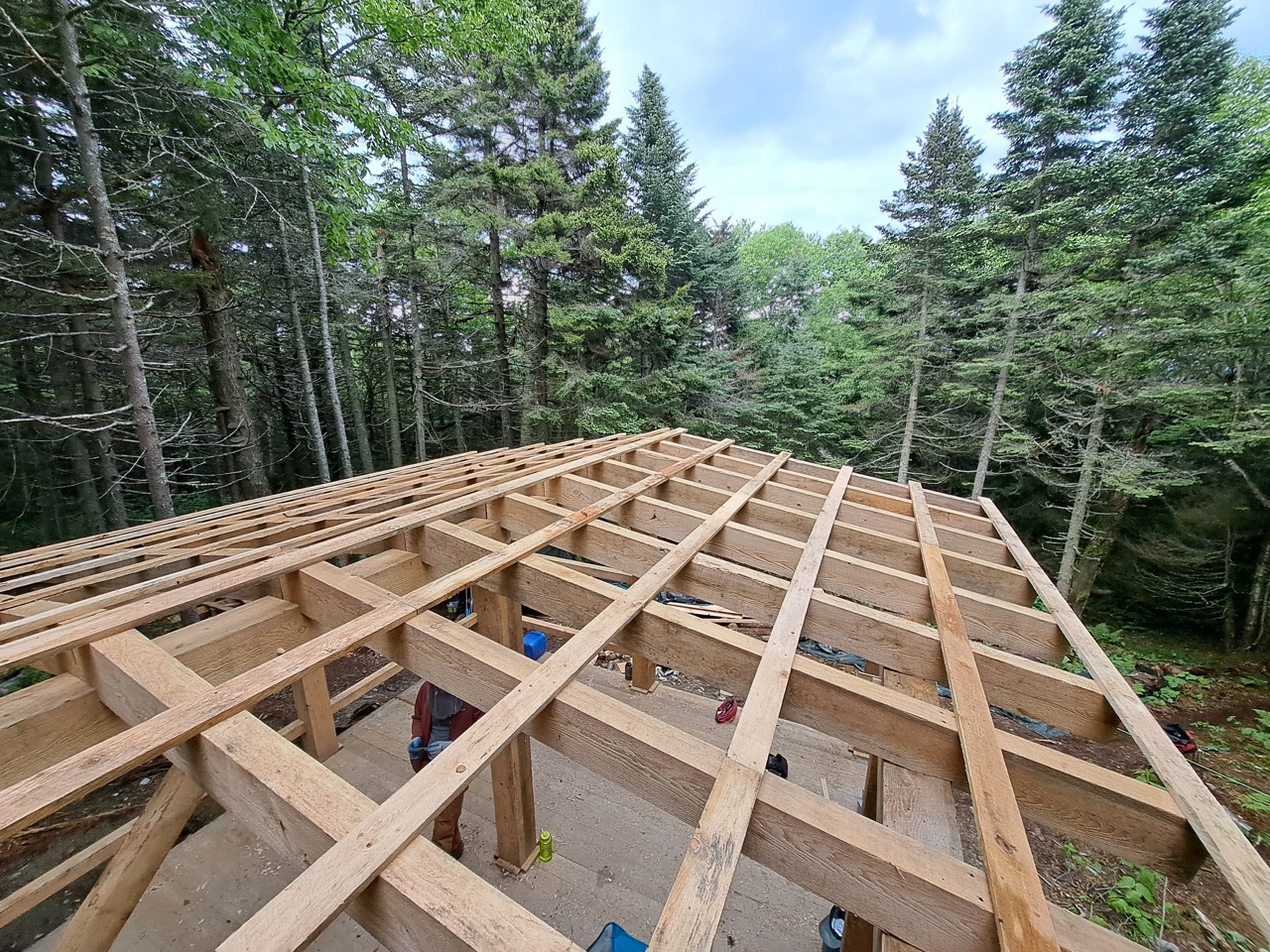
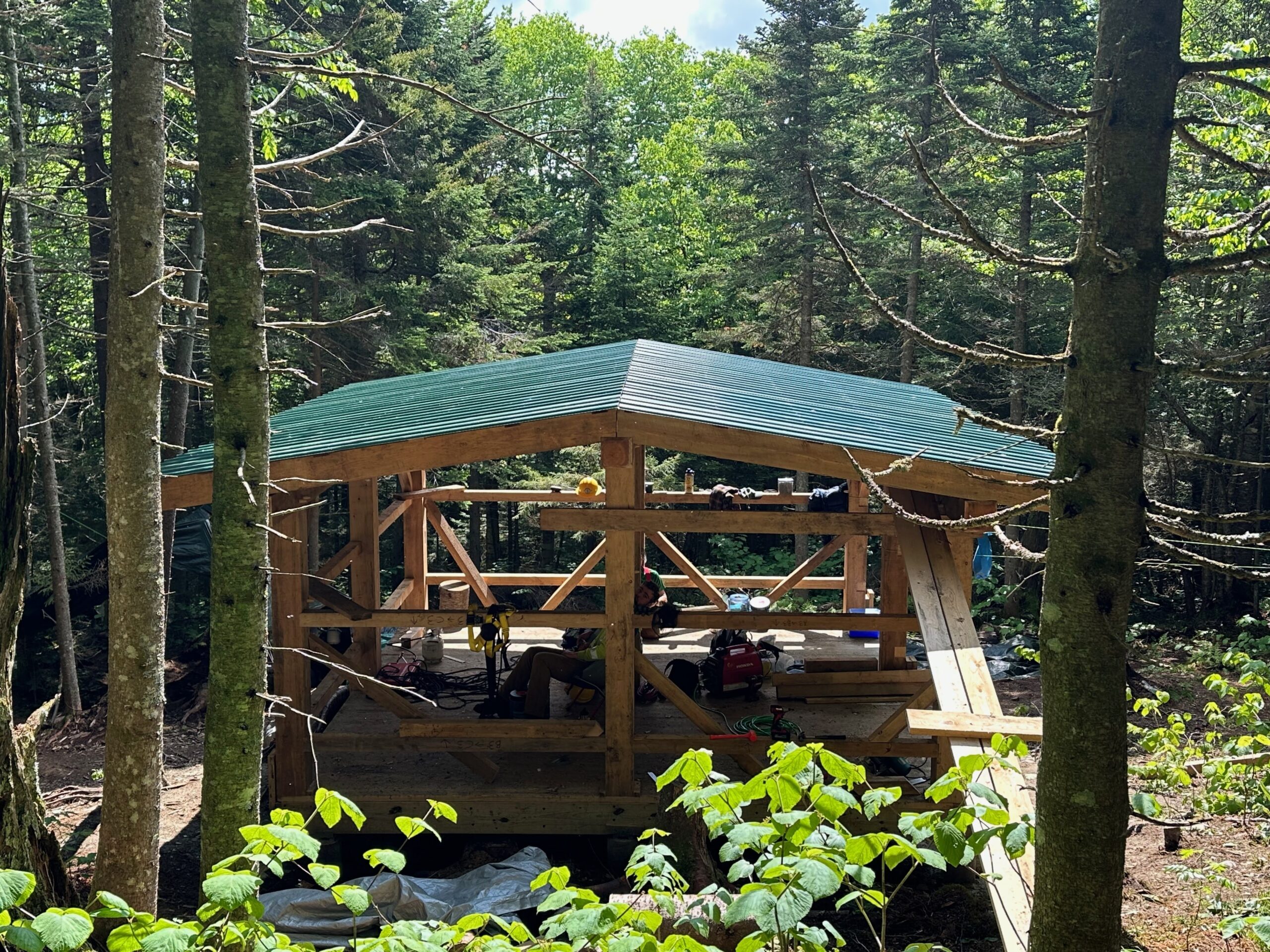
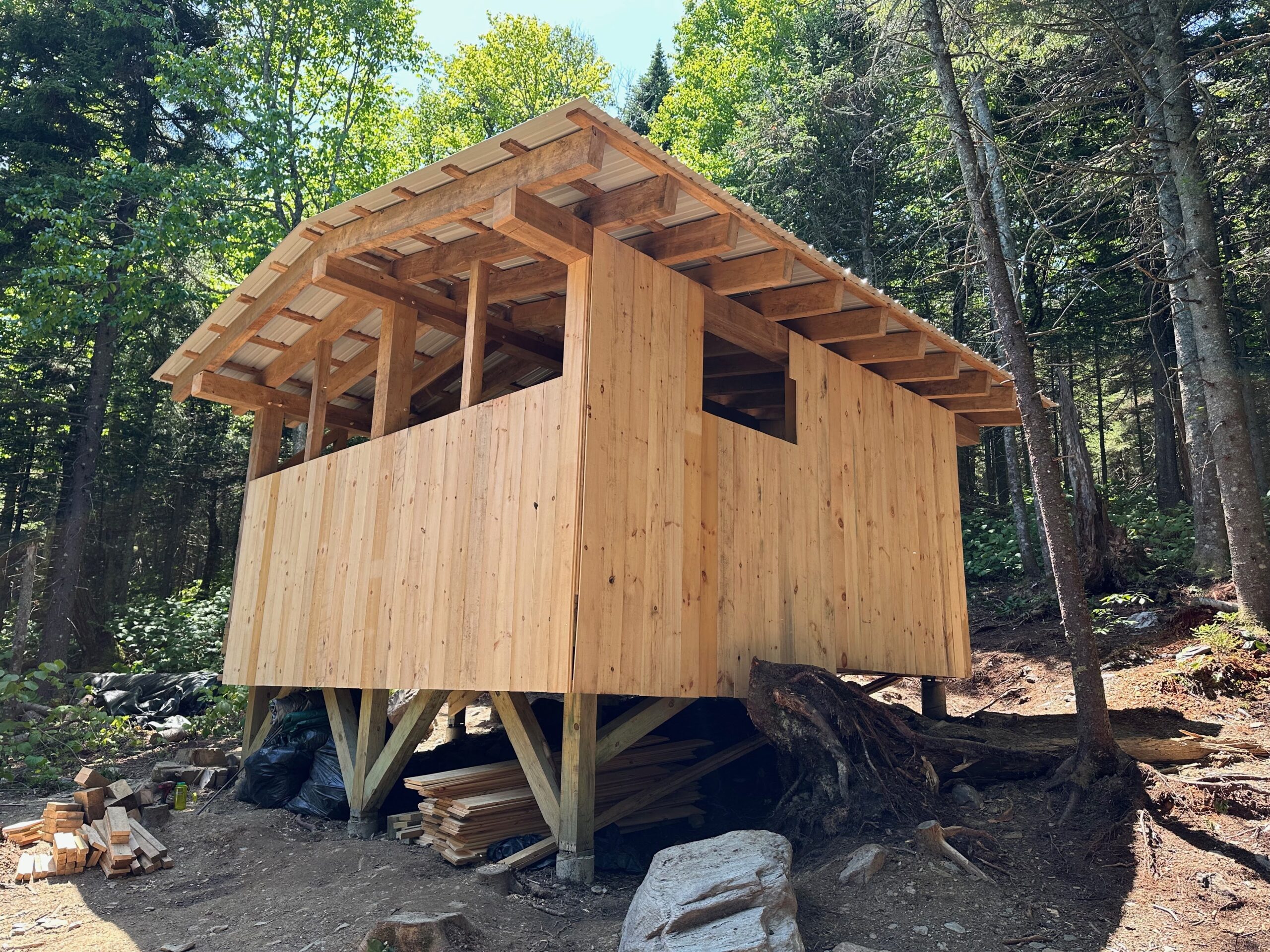
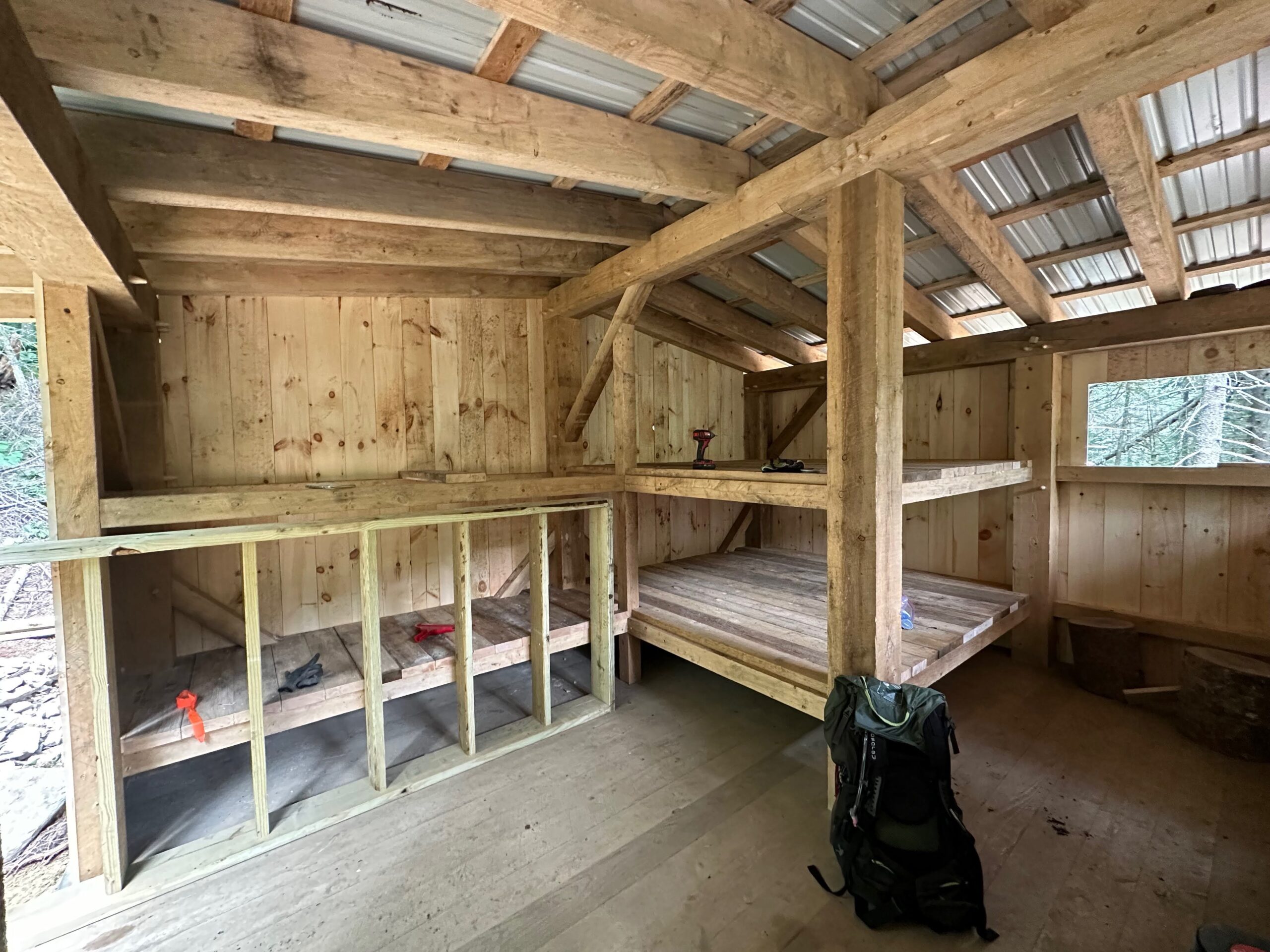

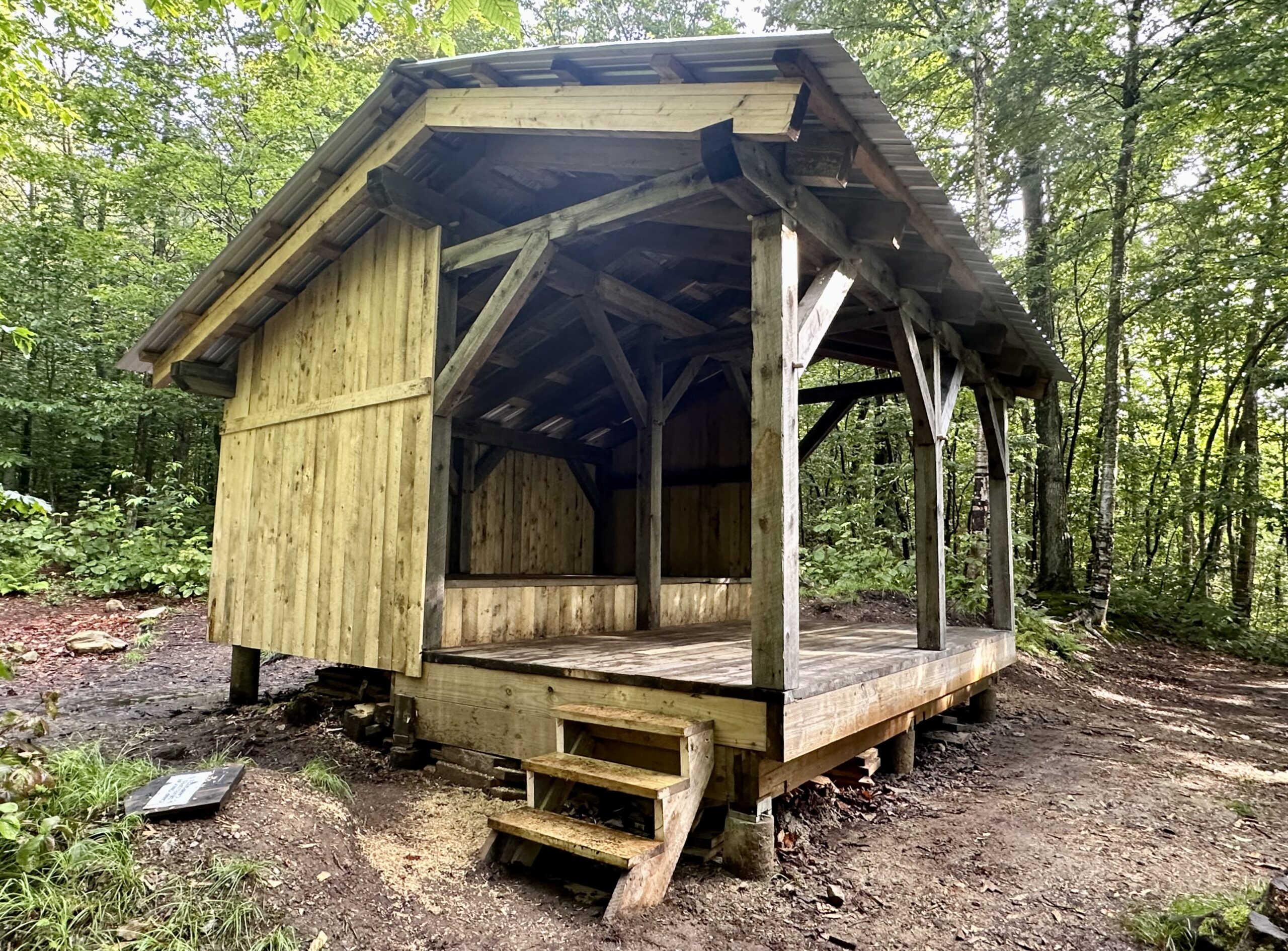
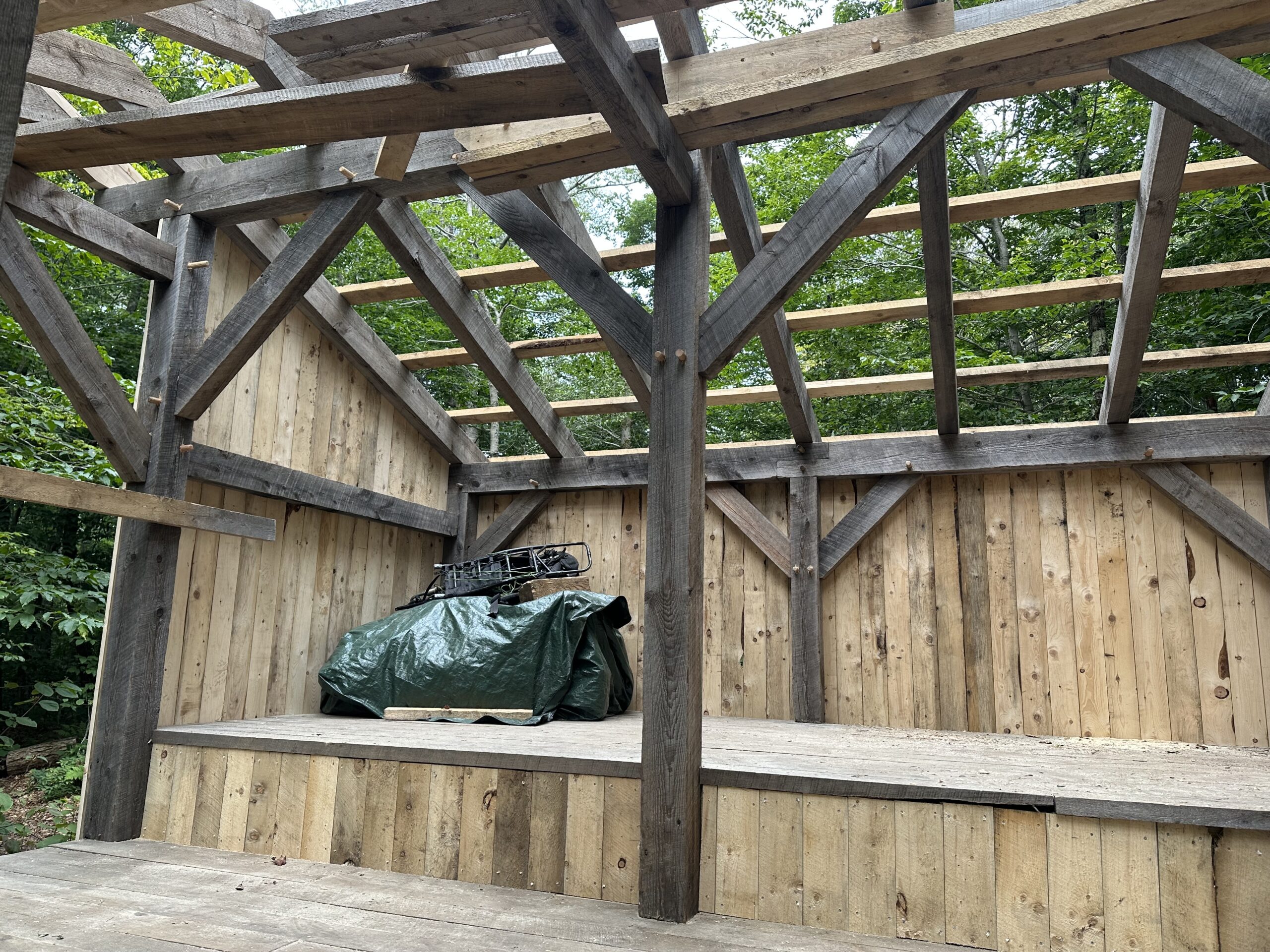
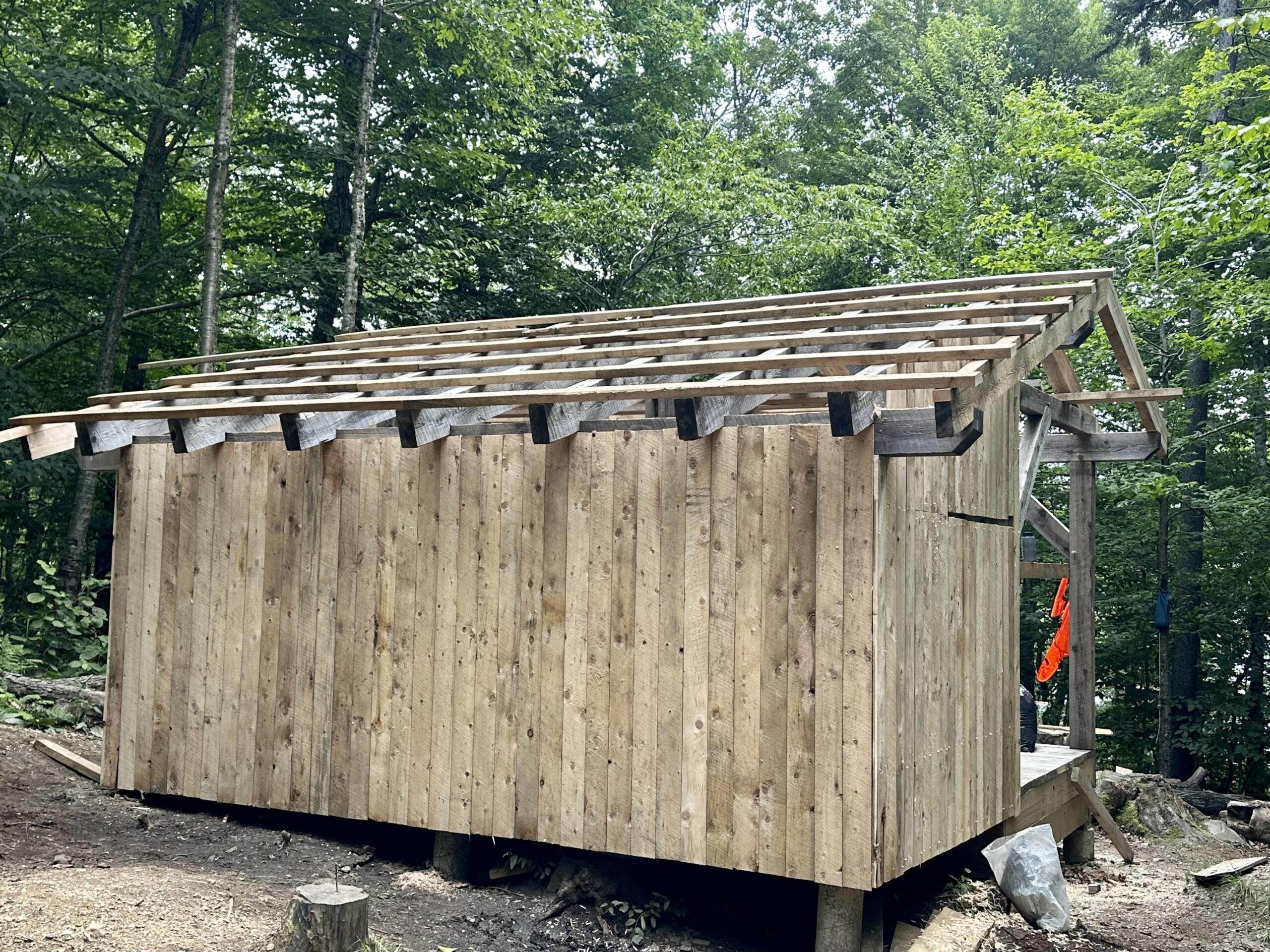
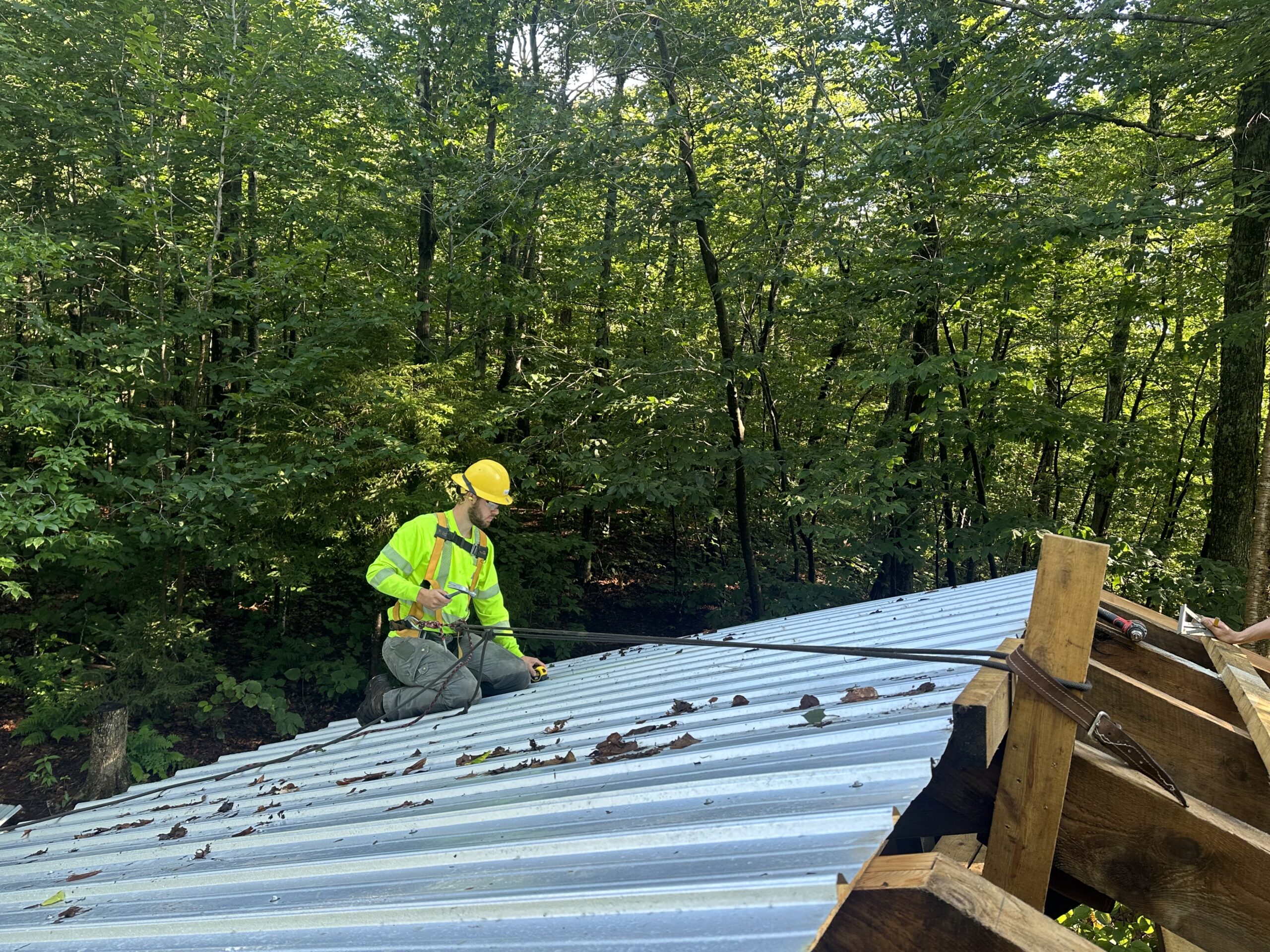
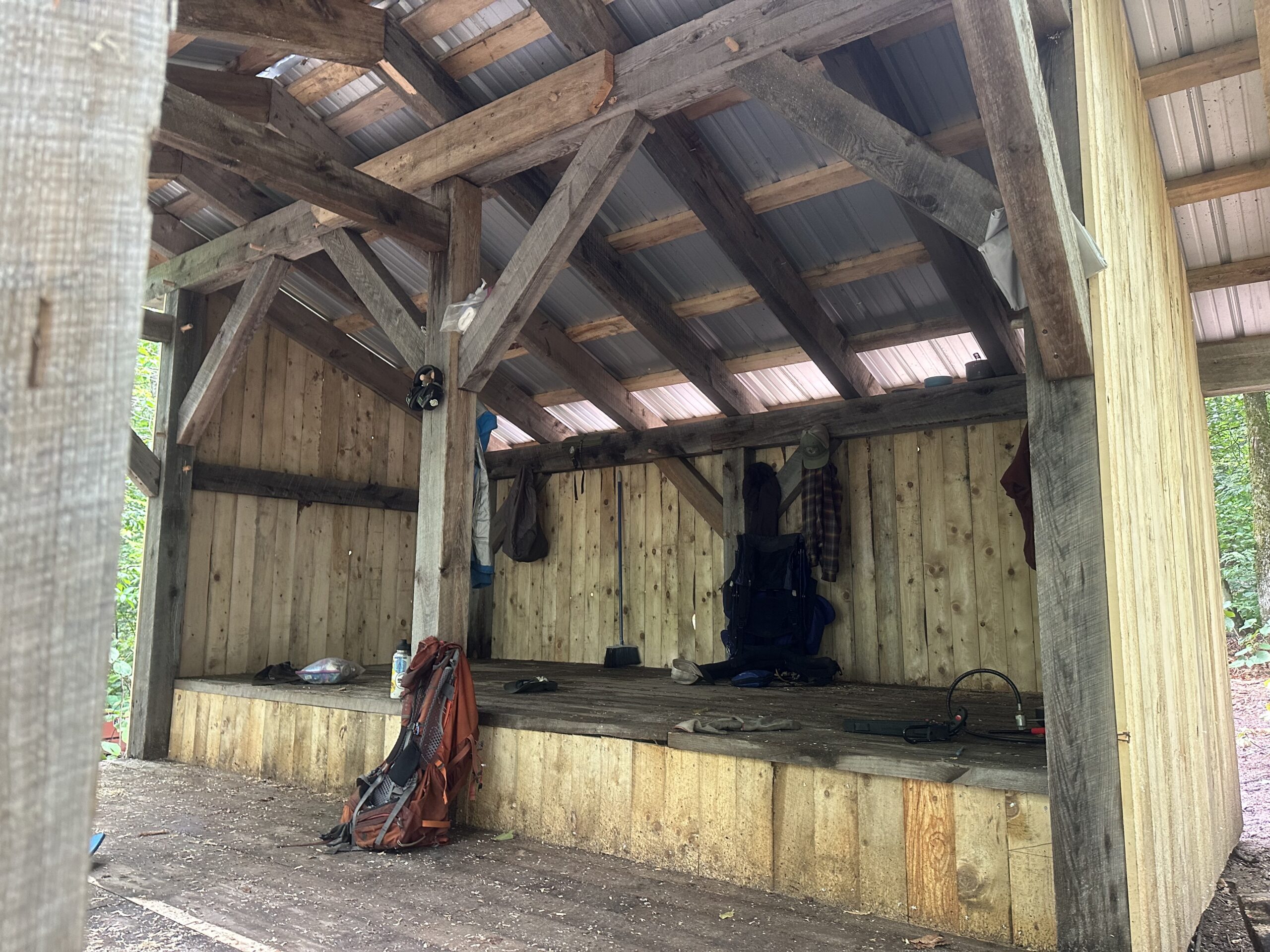
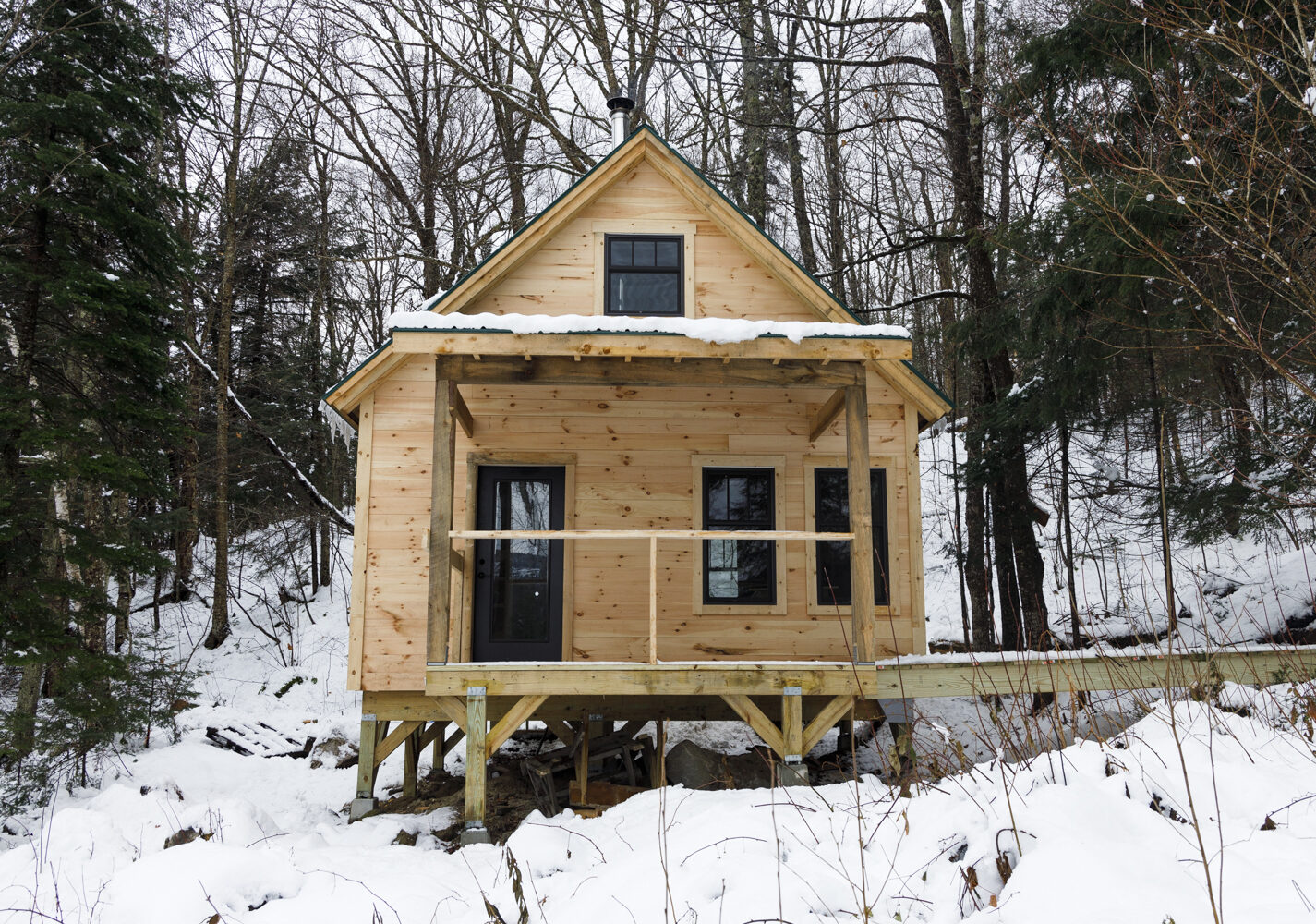

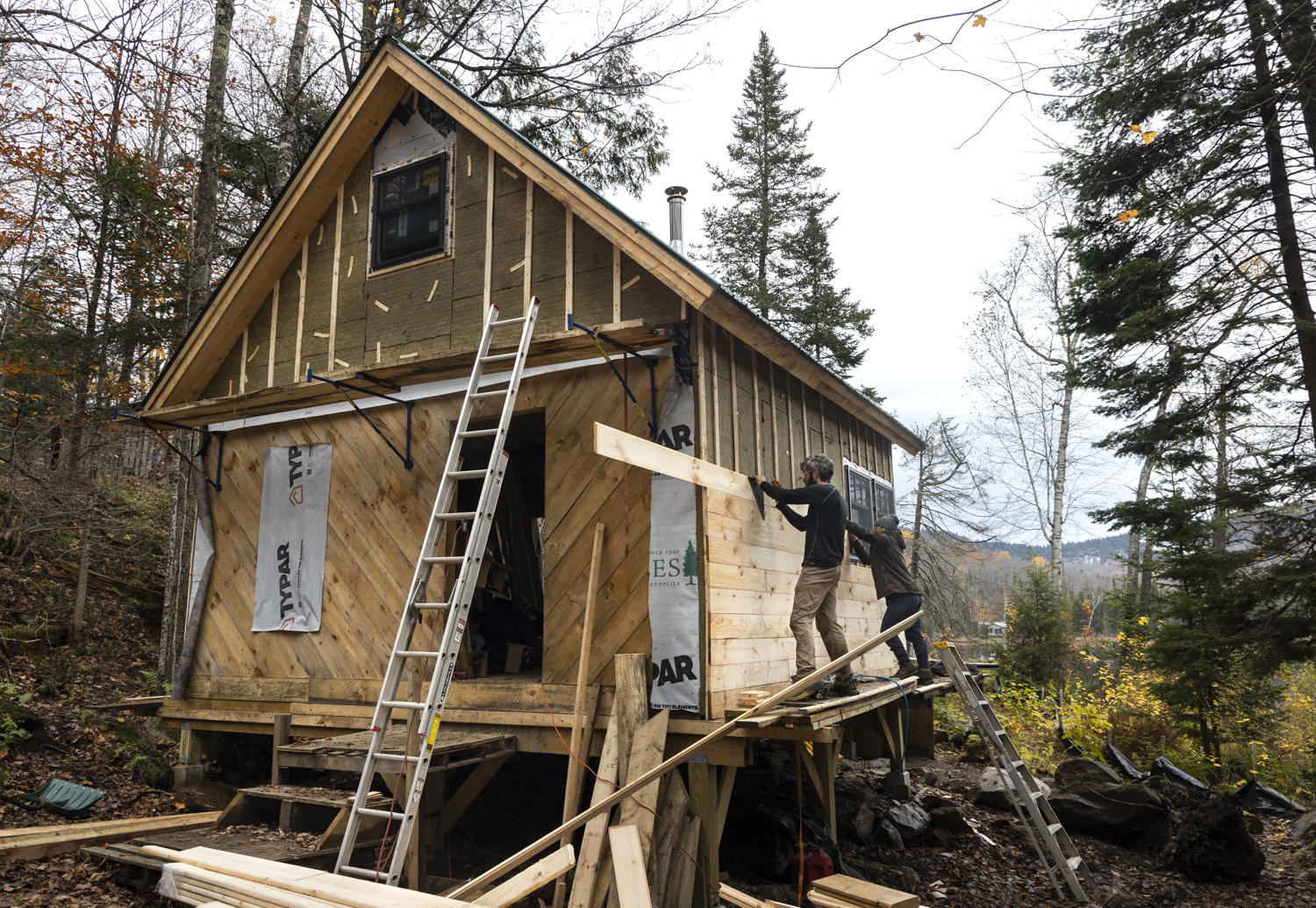
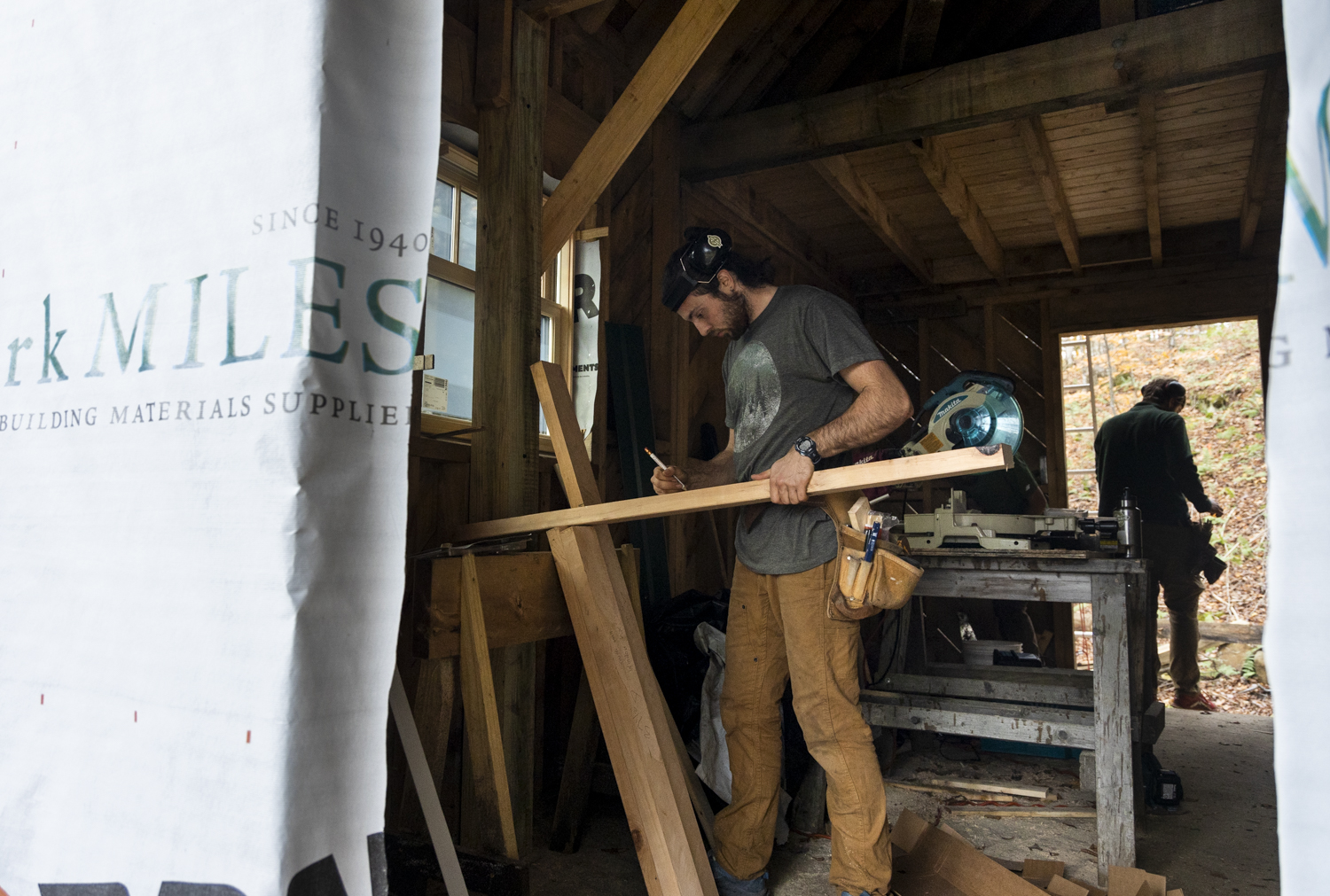
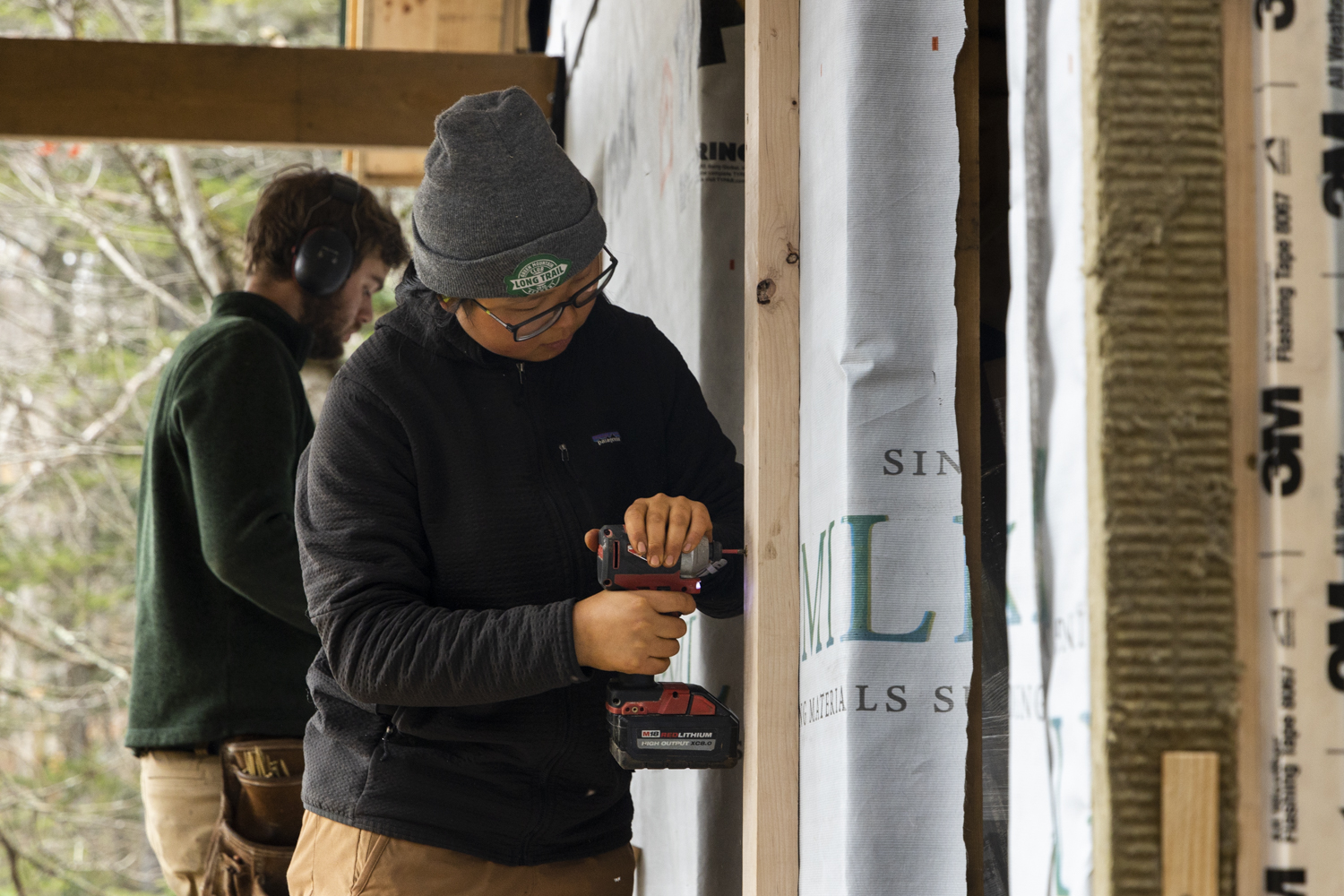
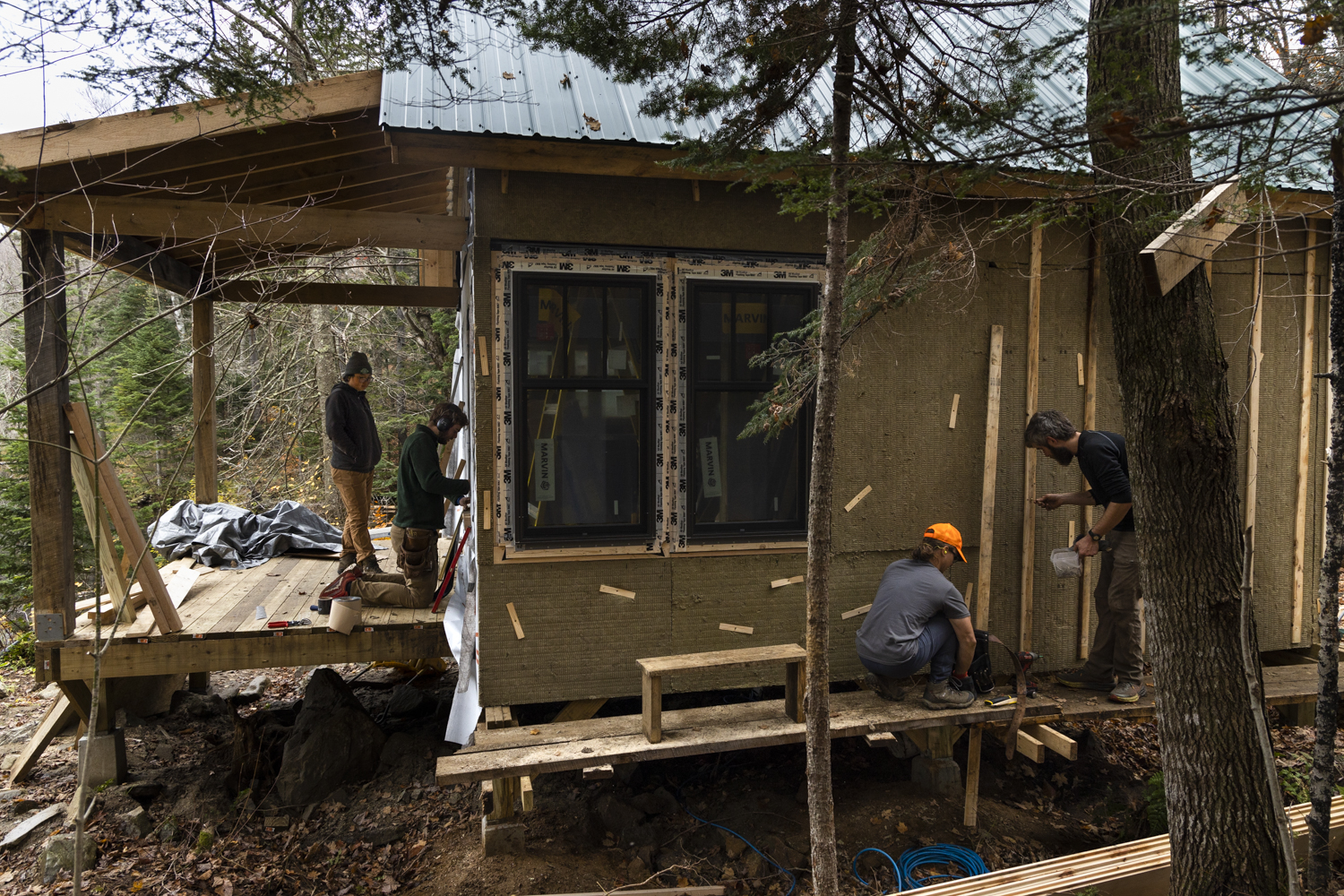
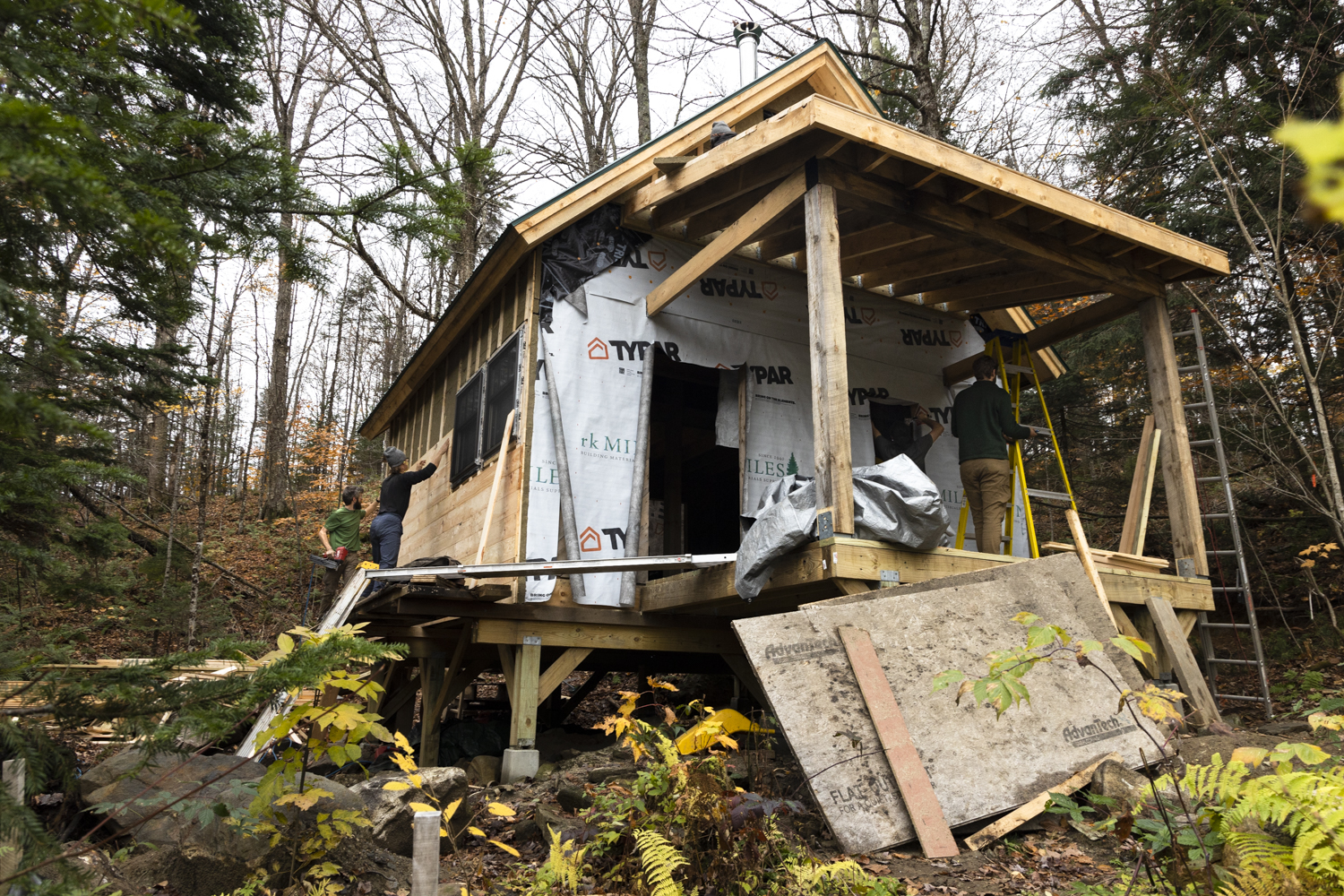
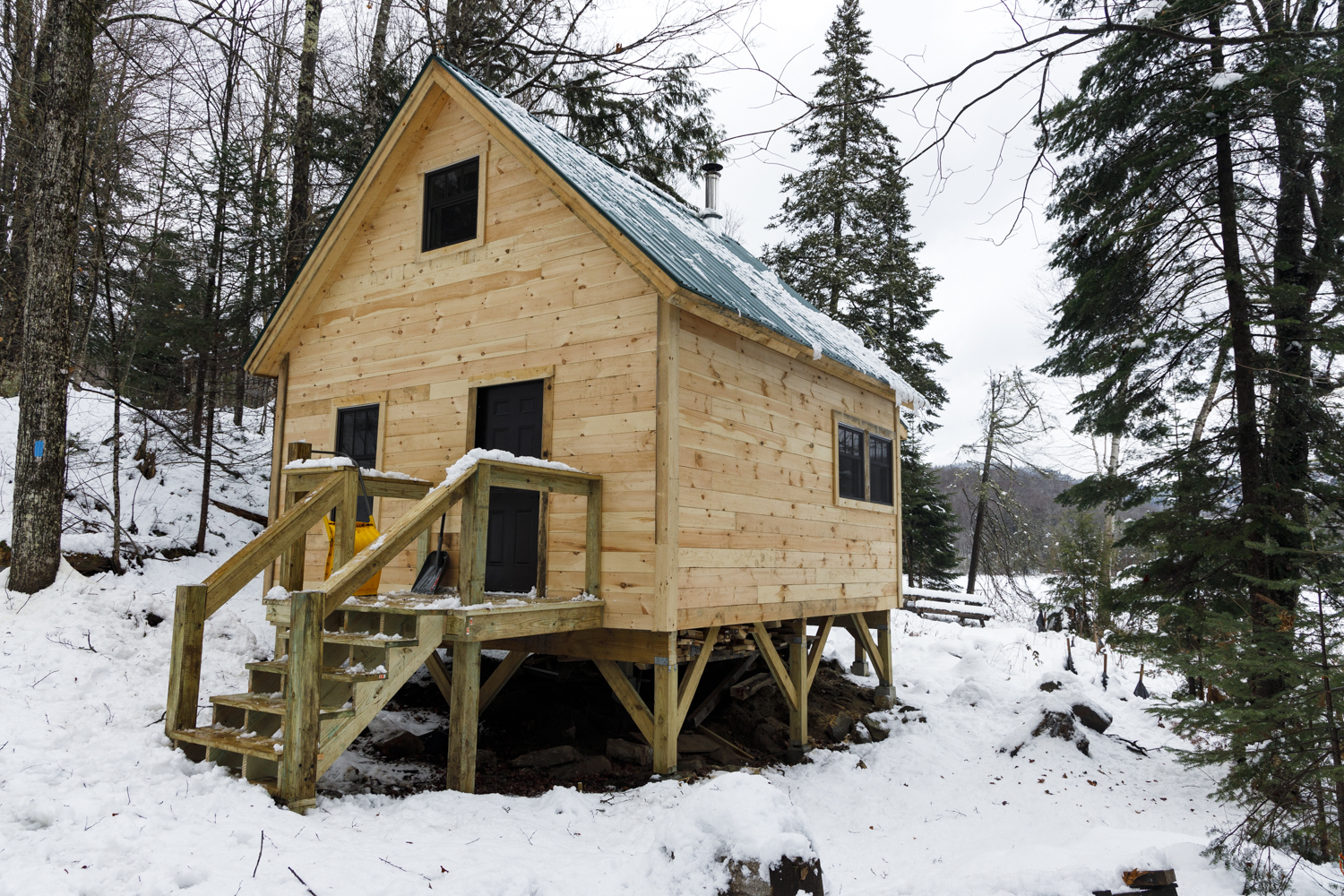
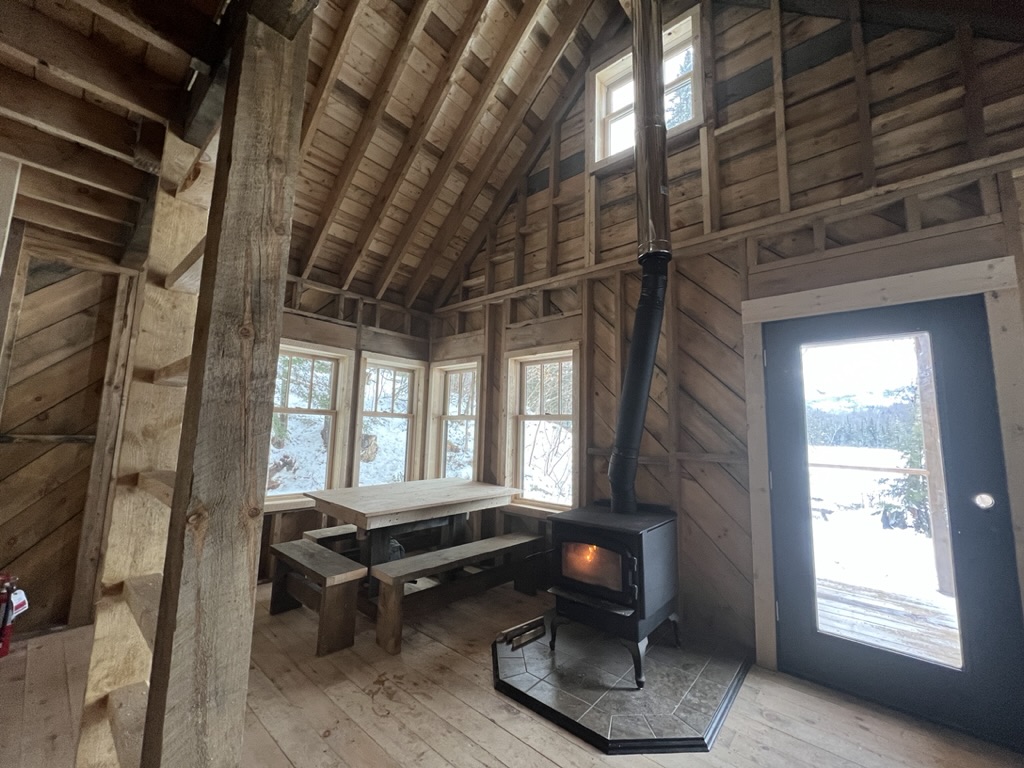
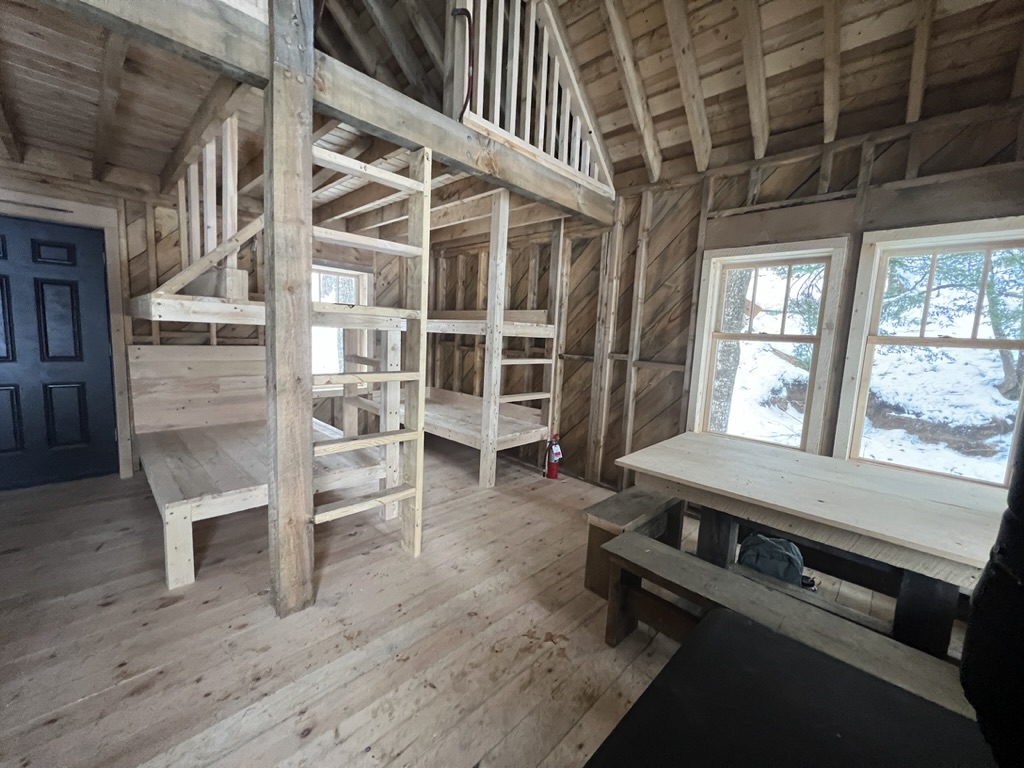
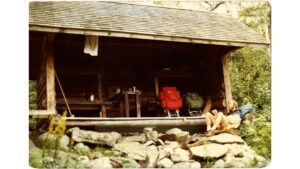
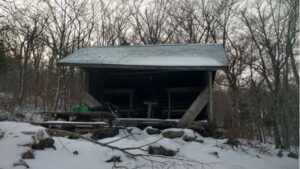
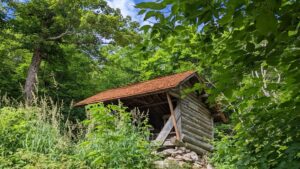

















thank you for sharing this blog.